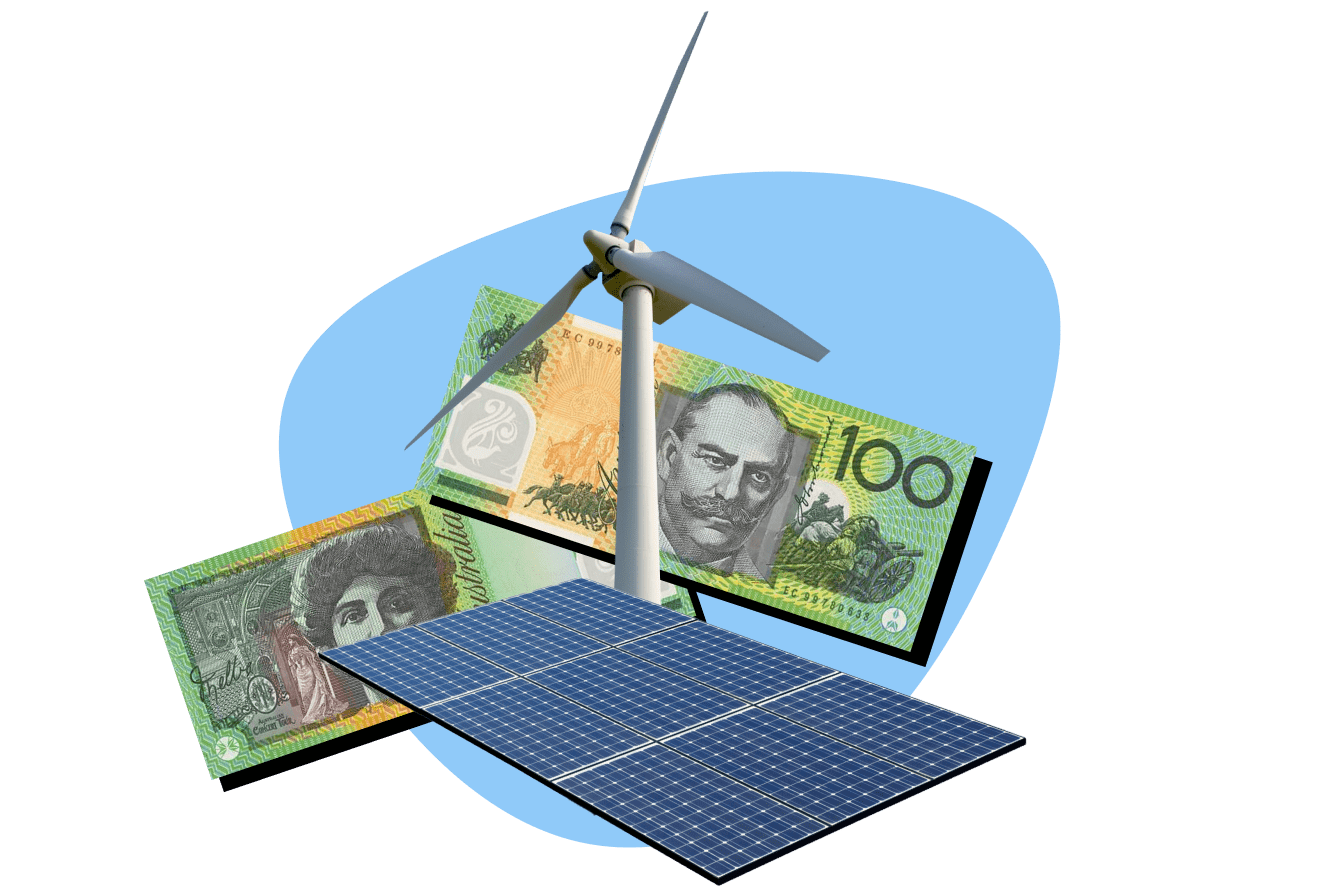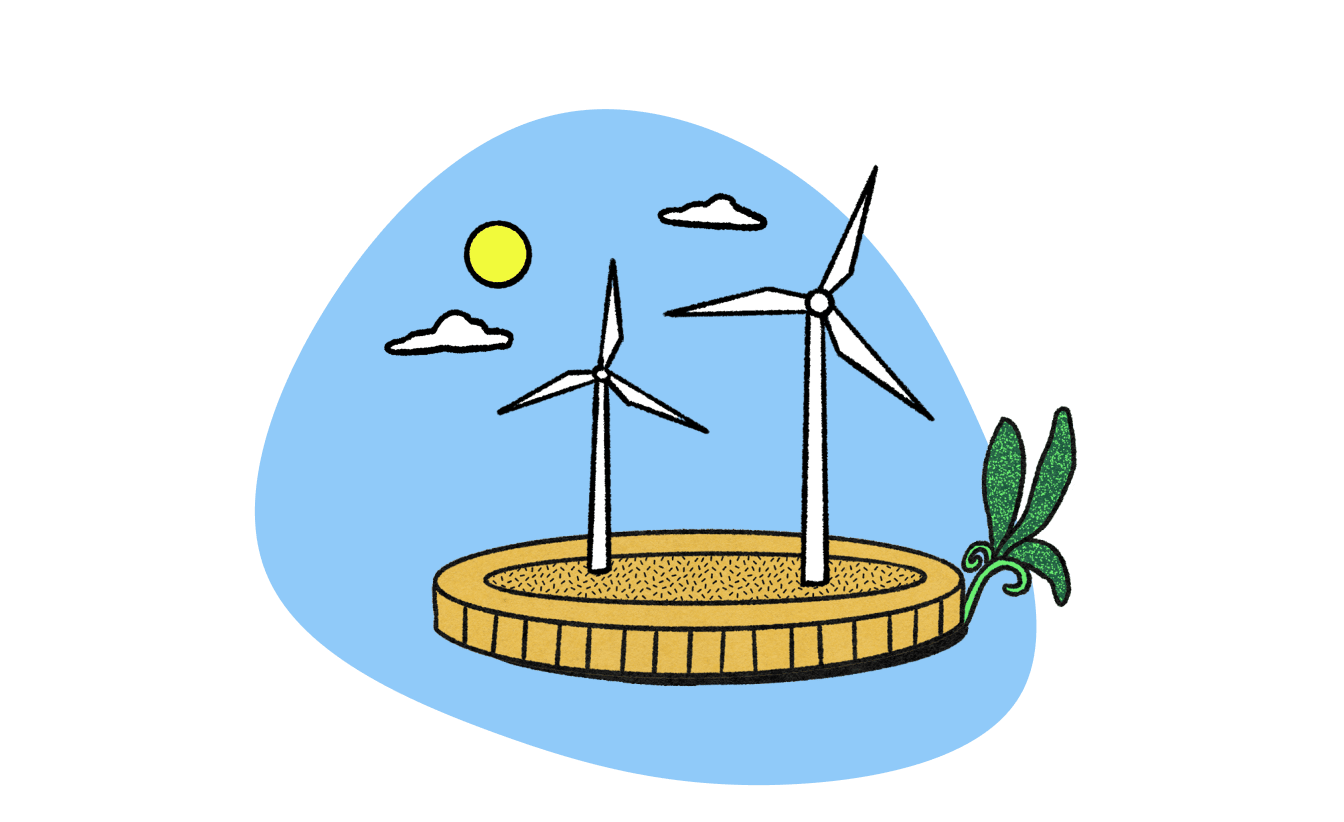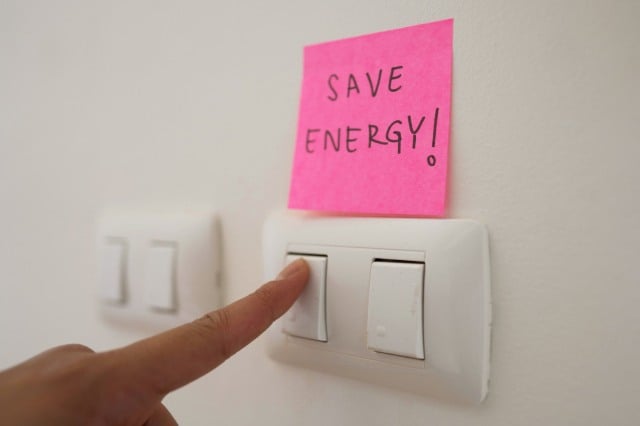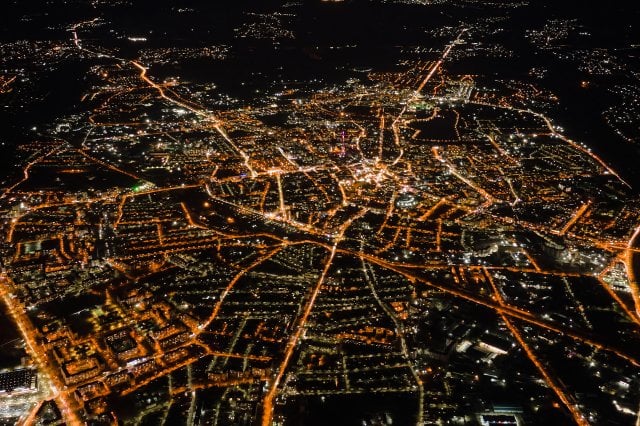High energy prices – we need renewables more than ever
More inexpensive renewable energy is being used to power our grids than ever before, but our power bills have continued to rise. Why? It’s the product of a complex energy system and global energy prices, but not a sign to change course on the transition to renewable power.
There’s plenty of evidence to help understand why the transition to renewable energy is not only gathering steam, but also working towards bringing down our power bills (and reducing emissions to curb climate change).

Renewables are cheaper
For the seventh year in a row, renewables have had the lowest cost range of any new electricity generation to the Australian grid, despite varied inflationary impacts across technologies1. And recent evidence shows that wind and solar produce energy at half the cost of coal and gas2.
Globally, more than 95% of new utility scale solar photovoltaic (PV) installations and new onshore wind capacity had lower generation costs than new coal and natural gas plants3.
Closer to home, the Australian Energy Market Operator (AEMO) measures the downward pressure renewable energy generation is having on wholesale energy prices4, much more than existing coal power generation5.
More renewables than ever
There’s more renewable energy powering our grid than ever before, AMEO’s dashboards and quarterly reports show6.
These days, about half of the energy powering our grids in Australia on average each quarter is from renewable sources, like the sun, wind or water. On any given day, the mix of renewables powering the grid can get above 75%7.
The change in the energy mix has been accelerating steadily. The percentage of renewables powering our grid has grown from less than 10% 20 years ago to where it is today8.

You’re not imagining it, energy prices are high
Average electricity prices across Australia remain elevated compared to historical levels – even though wholesale energy prices are down considerably from the price spikes during the energy crisis in 20229.
Energy prices have remained high for households on average in Australia and have been rising well above the rate of inflation for some years10.
Energy and geopolitics have always been closely linked, and geopolitical events have been one of the primary causes of sudden energy market disruption and price shocks in recent years11.
You’d think Australia’s energy prices would be much lower because we produce so much gas, but the reality is that more than 80% of the gas we produce in Australia goes offshore, closely observed by policy think tank The Australian institute12. As a result, Australian consumers are exposed to international gas prices, which contributes to our higher power bills13.
Retailer margins and profits have also added to household energy bill rises14. The cost of outages due to aging infrastructure is another reason for price spikes15.
And because close to 60 per cent of power distributed through our grids still relies on coal-fired power, outages and disruptions with the aging infrastructure are common and put continual pressure on the supply of electricity and the cost of energy16.
Weather and power system events have also been impacting the spot market for electricity prices, which has resulted in increases in both wholesale power prices and ultimately our power bills17.
Then there are the costs of transport, refining, marketing and distribution, customs duties, excise taxes and government fossil fuels subsidies which also contribute significantly to retail prices18.
A lot goes into what we pay for our energy at the end of the day!

The energy transition: needed now more than ever
It’s more important than ever to continue to push for the transition to renewable energy – we need it to meet science-based emissions targets, but our power bills will come down as a result, too.
Projections highlight that rapid clean energy transitions result in lower consumer bills compared with a trajectory based on today’s policy settings19.
Meanwhile, governments are currently spending hundreds of millions of dollars every year subsidising the use of fossil fuels. This is money they could be putting towards consumer-facing clean energy investments, such as grants or rebates for electric vehicles, efficiency improvements or heat pumps – which could help with energy usage improvements20.
In Australia, the rebates on power bills offer some short-term relief to households from high energy bills, but it’s not really addressing the root causes behind stubbornly high energy prices21.
Meanwhile, investor capital is flowing to renewable energy investments, with $US150 trillion expected to be invested by 2050 for the world to meet its science-based emissions targets22.
For our part, Australian Ethical is proud to invest in companies and projects supporting the transition to renewable energy.
We do this through our investment portfolios. We also provide debt to large scale renewable energy projects through our infrastructure debt fund, and in our private market portfolios. We do this because it makes good investment sense – it’s where capital is flowing as the world reduces emissions in line with science-based targets – and it’s good for the planet too.
1 GenCost: cost of building Australia’s future electricity needs - CSIRO
2 See P9, ‘Levelized cost of energy comparison’: Lazard LCOE+ (June 2024)
3 See P14, exec summary, IEA Special Report: Strategies for Affordable and Fair Clean Energy Transitions
5 https://www.climatecouncil.org.au/new-wind-and-solar-now-as-cheap-as-existing-coal/
6 2024-integrated-system-plan-isp.pdf
7 AEMO | National Electricity Market hits new demand and renewable energy records in December quarter
9 Wholesale markets quarterly - Q4 2022 | Australian Energy Regulator (AER)
10 Energy and gas prices vs overall inflation (2000-2024): Energy statistics Australia | Finder
11 How US Energy Independence Changed Geopolitics - Bloomberg
12 Gas: The Facts - The Australia Institute
13 Australian gas for Australians first - The Australia Institute
15 New research reveals our ageing coal fleet is unreliable and risks energy security | Climate Council
16 Lights Out: Ageing Coal and Summer Blackouts | Climate Council
18 Estimating Transport and Insurance Costs of International Trade | OECD
19 Executive summary – Strategies for Affordable and Fair Clean Energy Transitions – Analysis - IEA



